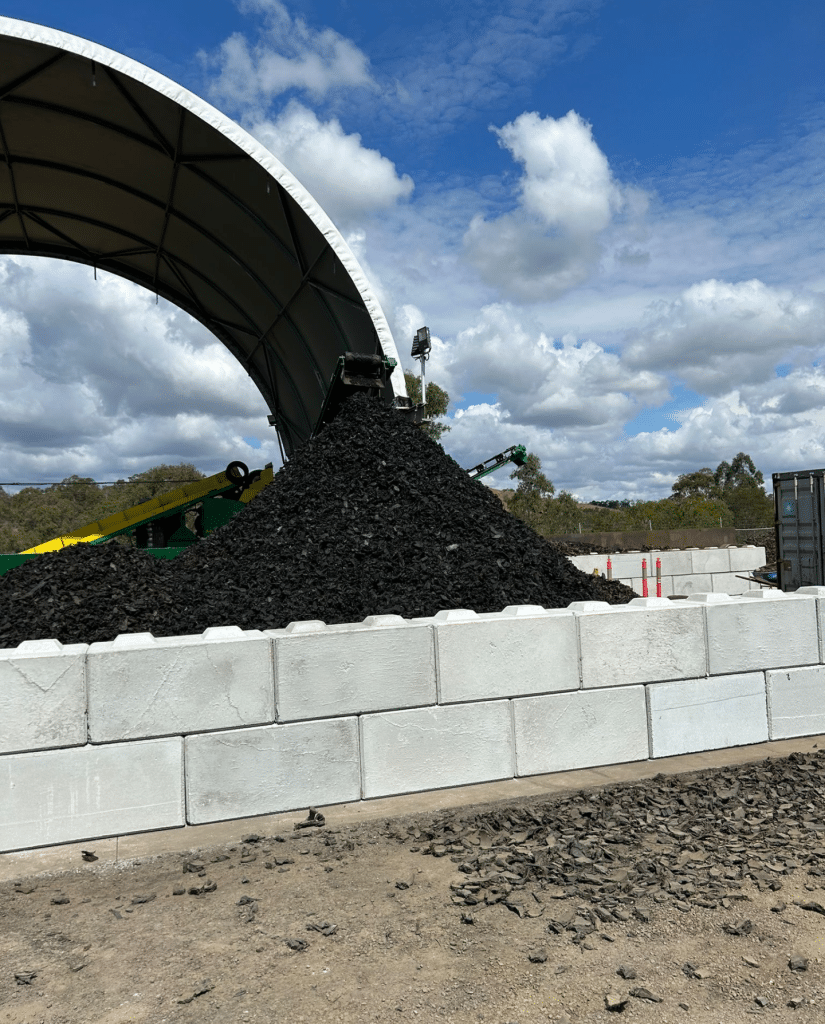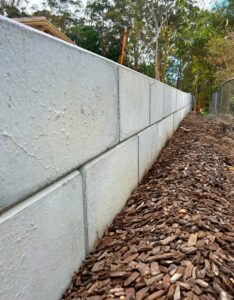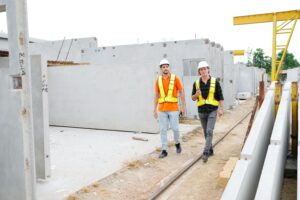Eco-friendly retaining wall systems, these innovative structures are not just holding back earth; they’re pushing forward a new era of sustainable building practices. As we face increasing environmental challenges, the demand for construction solutions that balance functionality with ecological responsibility has never been higher. Let’s explore how eco-friendly retaining wall systems are reshaping our approach to landscape management and structural support.
What Makes a Retaining Wall System Eco-Friendly?
Traditional retaining walls, while effective, often come with a significant environmental cost. From resource-intensive manufacturing processes to limited lifespans requiring frequent replacements, these structures can leave a substantial ecological footprint. Eco-friendly retaining wall systems, on the other hand, are designed with sustainability in mind from the ground up.
Key features of eco-friendly retaining walls include:
- Sustainable Materials: Use of recycled content, locally-sourced materials, or alternatives with lower environmental impact.
- Energy-Efficient Manufacturing: Production processes that minimize energy consumption and reduce greenhouse gas emissions.
- Reduced Carbon Footprint: Lower overall environmental impact throughout the product lifecycle.
- Integration with Natural Surroundings: Designs that work in harmony with the local ecosystem rather than against it.
- Longevity and Reduced Maintenance: Durable solutions that require less upkeep and fewer replacements over time.
Types of Eco-Friendly Retaining Wall Systems
The market for sustainable retaining walls has blossomed in recent years, offering a variety of options to suit different needs and environments:
1. Precast Concrete Systems
Leading the charge in eco-friendly retaining walls are innovative precast concrete solutions. Companies like InfraBlock are at the forefront of this technology, offering products that combine strength, durability, and sustainability. Their Interlocking Blocks and Large Interlocking Blocks, for instance, are manufactured using optimized concrete mixes that reduce cement content while maintaining structural integrity. These systems offer several advantages:
- Efficient use of materials through precise manufacturing
- Reduced on-site waste compared to cast-in-place concrete
- Faster installation, minimizing construction-related emissions
- Potential for disassembly and reuse in future projects
InfraBlock’s Custom Designed Faced Blocks take this concept further, allowing for aesthetic customization without compromising on eco-friendly principles.
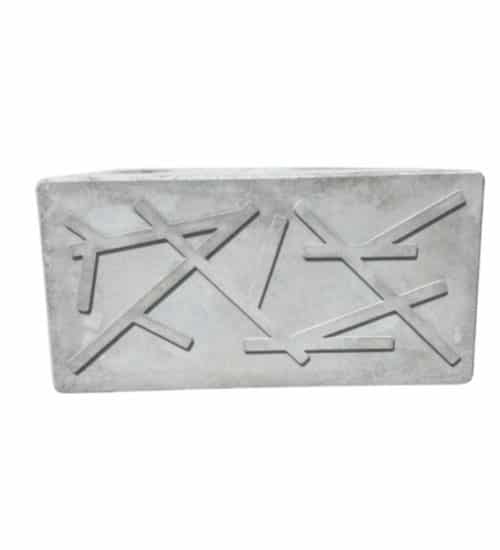
2. Living Walls and Vegetated Systems
Combining structural support with green infrastructure, living retaining walls incorporate vegetation into their design. These systems can:
- Enhance biodiversity by providing habitats for local flora and fauna
- Improve air quality through natural filtration
- Assist in stormwater management
- Reduce urban heat island effects
3. Recycled Material Walls
Innovative systems using recycled plastics, rubber, or other reclaimed materials are gaining traction. While not suitable for all applications, these walls can be an excellent choice for smaller-scale projects, effectively diverting waste from landfills.
4. Gabion Walls
Consisting of wire cages filled with rocks or recycled concrete, gabion walls offer a raw, natural aesthetic. They’re particularly effective in areas prone to erosion and can often use locally-sourced materials, reducing transportation-related emissions.
Environmental Benefits of Eco-Friendly Retaining Walls
The positive environmental impact of these sustainable systems extends far beyond their immediate function:
- Reduced Carbon Emissions: The production of traditional concrete is a significant source of CO2 emissions. Eco-friendly alternatives, like InfraBlock’s optimized precast systems, can reduce this impact by up to 30%.
- Improved Water Management: Many sustainable retaining wall systems, including InfraBlock’s products, are designed with enhanced drainage capabilities. This not only improves the wall’s performance but also helps manage stormwater runoff more effectively.
- Support for Local Ecosystems: Vegetated walls and systems that integrate with the natural environment can create new habitats and support biodiversity.
- Resource Conservation: By using recycled materials or optimizing the use of raw materials, eco-friendly retaining walls help conserve natural resources.
Economic Advantages: The Long-Term View
While the initial investment in eco-friendly retaining wall systems may sometimes be higher than traditional options, the long-term benefits often outweigh the upfront costs:
- Durability and Low Maintenance: High-quality, sustainable systems like those offered by InfraBlock are engineered for longevity. This translates to reduced maintenance costs and less frequent need for replacement.
- Energy Efficiency: In some applications, such as building foundations or landscaping near structures, eco-friendly retaining walls can contribute to better insulation and energy efficiency.
- Property Value: As environmental considerations become increasingly important, properties featuring sustainable landscaping solutions may see increased value.
- Regulatory Compliance: With environmental regulations tightening in many areas, eco-friendly systems can help projects meet or exceed compliance requirements, potentially avoiding costly modifications down the line.
Design Flexibility and Aesthetic Appeal
Contrary to the misconception that sustainable means sacrificing aesthetics, eco-friendly retaining wall systems offer a wide range of design possibilities. InfraBlock’s Custom Designed Faced Blocks, for example, allow for unique patterns, textures, and even colors, all while maintaining their eco-friendly credentials.
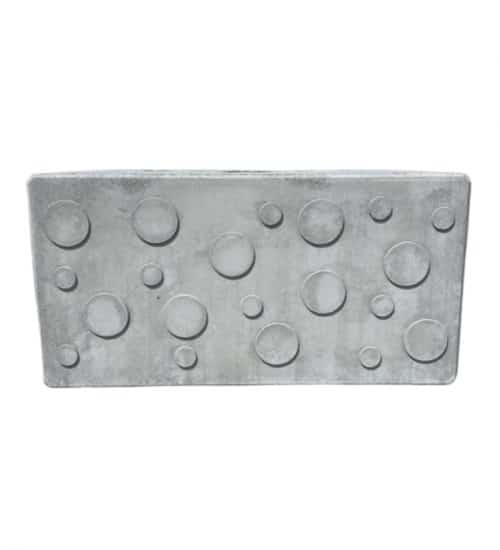
This flexibility enables architects and landscape designers to create visually striking structures that complement their surroundings. Whether it’s a sleek, modern look for an urban development or a more natural appearance for a rural setting, eco-friendly options can meet diverse aesthetic needs.
Installation and Maintenance: Efficiency in Action
The installation process for many eco-friendly retaining wall systems, particularly precast concrete solutions like those from InfraBlock, offers significant advantages:
- Reduced On-Site Time: Precast elements arrive ready to install, minimizing construction time and associated disruptions.
- Less Heavy Machinery: Many systems require less heavy equipment for installation, reducing fuel consumption and emissions.
- Minimal Waste: Factory-produced elements result in less on-site waste compared to traditional construction methods.
Maintenance for these systems is often simpler and less frequent, thanks to their durable design and high-quality materials. This not only saves money over time but also reduces the environmental impact of ongoing upkeep.
Challenges and Considerations
While eco-friendly retaining wall systems offer numerous benefits, it’s important to consider potential challenges:
- Initial Costs: Some sustainable options may have higher upfront costs, though they often prove more economical over time.
- Site-Specific Factors: Not all eco-friendly systems are suitable for every location. Soil conditions, climate, and local regulations can impact the choice of retaining wall system.
- Expertise: Working with newer, sustainable systems may require specialized knowledge or training for proper installation and maintenance.
The Future of Eco-Friendly Retaining Walls
As technology advances and environmental concerns grow, the future of retaining wall systems looks increasingly green. Emerging trends include:
- Smart Materials: Development of concrete mixes that can absorb CO2 or self-heal minor cracks.
- Enhanced Integration with Green Infrastructure: More sophisticated systems that combine structural support with stormwater management or energy generation.
- Improved Recycling and Reuse: Advancements in the ability to recycle and repurpose materials at the end of a wall’s life cycle.
Companies like InfraBlock are at the forefront of these innovations, continually refining their products to meet evolving environmental standards and performance requirements.
Eco-friendly retaining wall systems are more than just a green alternative; they’re a glimpse into the future of sustainable infrastructure. As we’ve explored, these innovative solutions offer a perfect blend of functionality, durability, and environmental responsibility.

